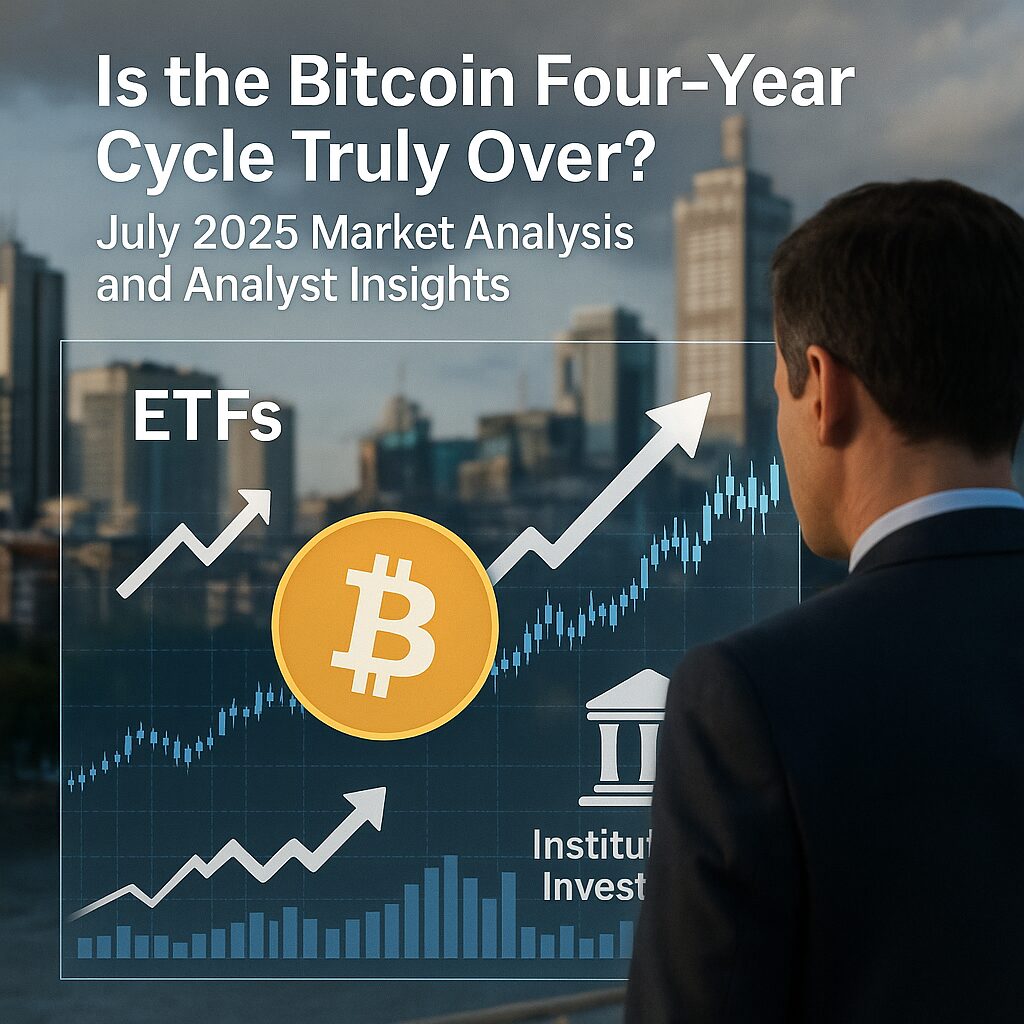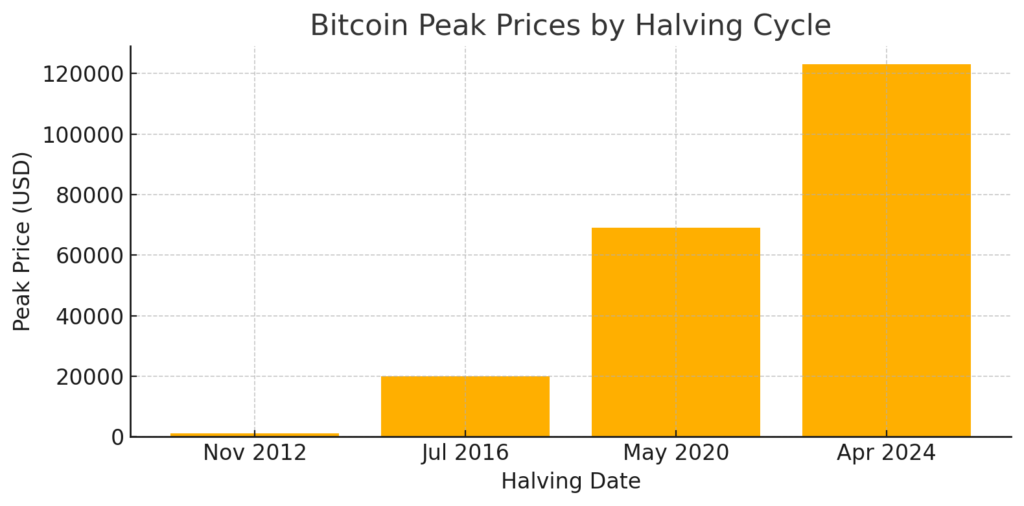
Main Points:
- Evolution of the Bitcoin cycle: Traditional four-year halving cycle dynamics have shifted due to institutional ETFs and market maturity.
- Post-2024 signs: Spot-Bitcoin ETF inflows, record all-time highs, and stabilized volatility indicate a new regime.
- Analyst perspectives: Mixed views—from those who declare the cycle “dead” to bullish forecasts of $150K–$250K by year-end 2025.
- 2025 price forecasts: Projections range $130K (Saxo) to $250K (van de Poppe), underpinned by ETF adoption and institutional treasury strategies.
- Investment strategies: Shift from timing halvings to dollar-cost averaging, profit-taking schedules, and diversified crypto portfolios.
What Is the Bitcoin Four-Year Cycle?
The Bitcoin four-year cycle theory centers on the network’s halving events—when miner block rewards are cut in half, historically triggering a multi-year price run-up followed by a contraction. In past cycles:
- Nov 2012 halving: Reward 50→25 BTC; price rose from ~$12 to ~$1,150 (+9,500%).
- Jul 2016 halving: 25→12.5 BTC; price surged from ~$660 to ~$20,000 (+3,000%).
- May 2020 halving: 12.5→6.25 BTC; price climbed ~770% to ~$69,000.
- Apr 2024 halving: 6.25→3.125 BTC; price reached a new ATH of $123,120, marking a 65.2% gain—far below previous cycle growth rates.
Traditional cycle phases:
- Accumulation (pre-halving): Price stagnates as miners’ selling pressure wanes.
- Preparation (6–12 months post-halving): Supply shock builds.
- Bull run: Rapid capital inflows spark a parabolic rally.
- Blow-off top & correction: Sharp pullback follows euphoric highs.
Signs of Cycle Evolution Post-2024
Institutional ETF Inflows and All-Time Highs
Approval of spot Bitcoin ETFs in the U.S. (January 2024) transformed market structure. BlackRock’s IBIT and others now manage over 700K BTC, driving record inflows. On July 14, 2025, Bitcoin hit $123,120, fueled by ETF purchases, institutional treasury allocations, and renewed DeFi activity—Ether surpassed $3,000 simultaneously.
Stabilized Volatility & Market Maturity
Compared to previous wild swings, volatility has dampened. Investors show a preference for:
- Long-term holding over speculative trading
- Regulated venues under clearer frameworks
- Diversified approaches beyond BTC, including ETH, SOL, and emerging protocols
Analyst Perspectives on the Cycle’s Fate
“Cycle Is Dead” Camp
RiskHedge Research asserts the four-year cycle is obsolete in today’s passive ETF era. BTC’s 60% gain since April 2024 pales next to the 436% post-2020 surge, signaling a new regime where price action depends less on halvings.
“New Era, New Cycle” Camp
Others argue history still rhymes. Michaël van de Poppe forecasts $125K in July 2025, $150K by Q3, and $250,000 by year-end as institutional flows compound. Similarly, Saxo analysts see targets between $150K–$250K, driven by persistent demand and post-halving supply dynamics.
2025 Price Forecasts: $130K to $250K
| Source | Year-End 2025 Target | Rationale |
|---|
| Saxo analysts | $150,000–$250,000 | Continued ETF inflows, policy tailwinds |
| Michaël van de Poppe (Trader) | $250,000 | Institutional passive flows & macro adoption |
| Standard Chartered’s Geoff Kendrick | $200,000 | Historical supply shock and demand inflection |
| Investopedia’s Stephen Cole | $140,000–$160,000 | Treasury diversification trend in corporate balance sheets |

Despite variance, the consensus leans bullish, with a median view around $180,000.
Adapting Investment Strategies
From Halving Timing to DCA & Profit Scheduling
- Dollar-Cost Averaging: Reduces market-timing risk in a less cyclical regime.
- Staged Profit-Taking: Sell partial positions at predefined milestones (e.g., $125K, $175K, $225K).
- Diversification: Balance BTC with ETH, SOL, and select altcoins poised for institutional adoption.
- Risk Controls: Trailing stops and position sizing to manage drawdowns in potential pullbacks below $100K.
Conclusion
The Bitcoin four-year cycle has undeniably transformed. While classic halving-driven parabolic rallies may recede, the advent of spot ETFs, institutional treasury allocations, and regulatory maturation herald a new paradigm. Investors should recalibrate: focus on steady accumulation, profit discipline, and portfolio diversification rather than banking solely on halving-timed surges. This adaptive approach may unlock opportunities in BTC’s next chapter, regardless of whether traditional cycles hold sway.

